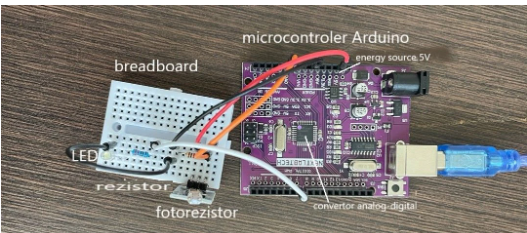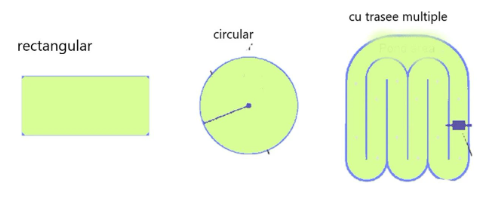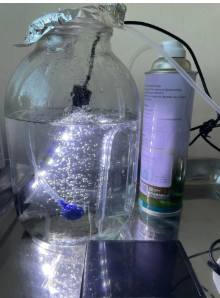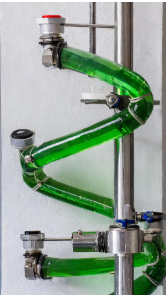Green Ideas - Using photobioreactors for pollution mitigation
Solutions
- Photobioreactors
- Closed photobioreactors
- Photobioreactor control
- Open photobioreactors
- Components
- Light source to provide energy for photosynthesis and algal growth (natural or artificial).
- Culture vessel (glass, plastic or metal and can take the form of tubes, tanks or bags).
- Mixing and aeration system in order to prevent stratification and fouling and to provide oxygen for algal growth.
- Nutrient Delivery System.
- Harvesting system (centrifuge or filter system).
- Monitoring and control system: Sensors and controllers to monitor and regulate temperature, light, pH, etc. for algae growth.
- Usages and benefits
- Production of biofuels: biodiesel, ethanol and hydrogen.
- Wastewater treatment: removal of contaminants from wastewater, including nitrogen and phosphorus.
- Air purification: removal of CO2 and other polluting oxides.
- Food and animal feed: production of biomass used for human and animal nutrition (algae biomass is produced 30 times faster than agricultural biomass).
- Pharmaceuticals: Algae are capable of producing numerous substances with potential medical applications.
- Green walls

Closed systems initially require a higher investment, but, nevertheless, a closed system exceeds an open one by significantly higher productivity and quality, and especially reliable.
This is because factors impacting cultivation in a closed system can be precisely controlled, bacterial contamination is avoided, and the design allows for more efficient use of light compared to open ponds.
Evaporation of water is prevented, unlike open systems which are subject to local weather conditions.
Photobioreactors assume lower CO2 losses and allow higher concentrations of cells than under natural conditions.
In addition, closed systems are capable of producing food biomass.

To improve the processes in the photobioreactor, we used an Arduino microcontroller, to which we attached a breadboard with a photoresistor, 2 resistors (one variable light function and one constant) and an LED.
The microcontroller has an analog-to-digital converter that converts analog measured voltage into digital values (0-1023 bits).
We used an Arduino code, changing the parameters to make a correlation between: read values - illumination (lux) - measured voltage (volt).
We set the LED shutdown to readings below 200 (equivalent to 750 lux and 1.2 V. Thus, the illumination of the algae growth vessel can be controlled using the incident light function.

Open systems are usually flat and no deeper than 30 cm, usually built in circular configurations, with the water kept moving by paddle wheels to mix the algae.
Open ponds are quite cheap and easy to build. However, the danger of contamination, high water evaporation and low volumetric productivities are the main challenges, leading to lower quality biomass production, high water requirement.
Invasive and/or native species have the potential to contaminate open ponds. At low temperatures, open ponds are not effective.



By placing the connected cylinders of a photobioreactor on the external wall of buildings, algal biomass can be obtained, greenhouse gases are captured and an aesthetic aspect can be obtained that can improve the image of the built urban environment.
By harnessing the natural photosynthetic capabilities of algae, these photobioreactors offer a sustainable method for capturing carbon dioxide emissions, thereby mitigating the impact of greenhouse gases on the atmosphere.
Furthermore, the cultivation of algae for biomass production holds promise as a renewable energy source, potentially reducing dependence on fossil fuels.
This fusion of functionality and beauty not only enhances the visual appeal of urban environments but also serves as a tangible reminder of our collective responsibility to innovate for a greener, more sustainable future.